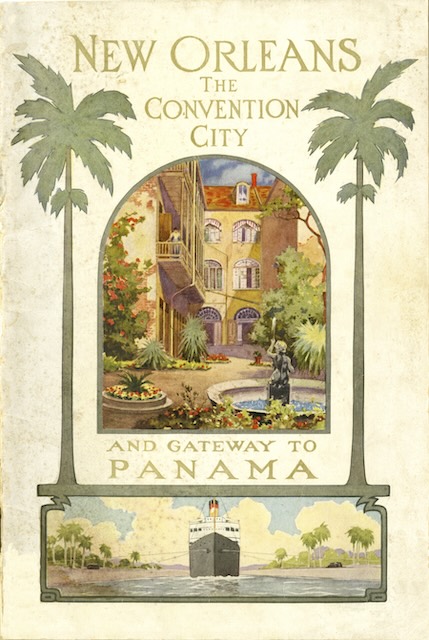Due to its climate, New Orleans has long been a popular vacation spot. The city held out against Jim Crow racism for longer than most other parts of the South, which allowed a flowering of artistic expression among its black community. As a result, it was and remains popular for its music, food, and other arts.
 Click image to download a 9.8-MB PDF of this 36-page booklet.
Click image to download a 9.8-MB PDF of this 36-page booklet.
Being the end of the line for Illinois Central’s southern route, the company naturally advertised the city as a vacation destination for people in the cold, wintry North. The text was written in 1914 by William Allen of the New Orleans Convention and Tourist Bureau. This copy is a 1921 reprint, but more than just a reprint, it is updated in several places.
The city’s various squares, the French Quarter, the Garden District, and the Mardi Gras are all featured in this booklet. While many of these are described as being “historical” or “turning back the page of time,” two pages of the booklet also celebrate the 1914 opening of the Panama Canal, which radically altered transportation routes.
The canal opened in 1914, but Illinois Central jumped the gun with the introduction of the Panama Limited in 1911, probably to take advantage of the enormous publicity being given to the country while the canal was under construction. This booklet advertises it as an all-steel train, while other trains including the New Orleans Special and New Orleans Limited were apparently not yet all-steel.
This booklet is from the collection of the family of Charles Medin (1883-1967), who was a staff artist for Illinois Central having studied at the Art Institute of Chicago. In addition to making posters and doing artwork for Illinois Central Magazine, he is credited with designing IC’s diamond logo. His family thought he might have painted the cover of this booklet, which is possible — I’ve seen a 1922 Illinois Central Magazine with his artwork in it — but uncertain without a signature.
